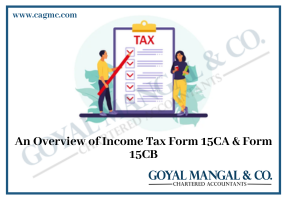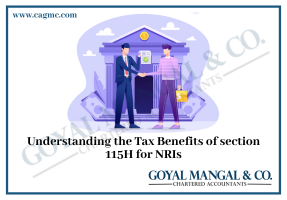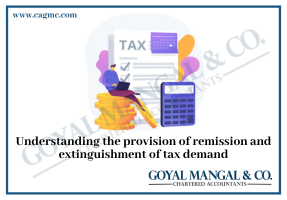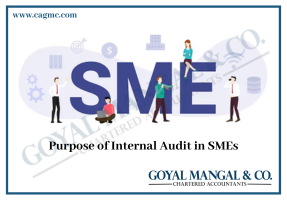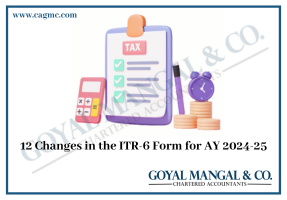
The terms “Form 16” and “Tax Deducted at Source (TDS)” may appear complicated, but they hold significant importance for taxpayers in India. The Form 16 is a formal document issued by an employer which helps individual to get idea about its earning and deductions. Tax Deducted at Source (TDS), means the tax sum that is withheld by your employer from your monthly salary and this amount is remitted to the government on your behalf. This article seeks to clarify the concepts of Form 16 and TDS, so facilitating a more detailed understanding of the Indian tax system.
| Table of Contents |
Overview of Form 16
The Form 16 is a crucial document typically provided by employers at the conclusion of the fiscal year, helping individuals in the completion of their income tax return (ITR) in collaboration with their Chartered Accountants. Form 16 is a document that presents comprehensive information pertaining to an individual’s yearly remuneration, housing loan interest, supplementary earnings, and deductions, comparable to the Income Tax Return (ITR).
The concept has a strong correlation with Tax Deducted at Source (TDS), wherein firms withhold taxes from the taxable income of employees and subsequently remit those funds to the government. Employers also engage in the periodic filing of Tax Deducted at Source (TDS) forms and furnish a Part B statement, like an Income Tax Return (ITR), which outlines the diverse income particulars of their employees.
Overview of Tax Deduction at Source
- The taxation system incorporates the utilization of TDS (Tax Deducted at Source), which entails the deduction of taxes at the point of origin during the disbursement of payments exceeding the designated threshold limit, as stipulated in diverse sections pertaining to various payment categories.
- In the case of salaried individuals, if their overall income over the prescribed threshold for exemption, they would be subject to Tax Deducted at Source (TDS) on their wage earnings. You can download Form 16 for salaried employee from income tax return portal. However, they can thereafter seek reimbursement of the deducted amount by completing their Income Tax Return (ITR).
- The employer deducts taxes from the employee’s salary income and remits the funds to the government treasury.
- Upon remitting the amount, individuals proceed to submit their tax returns using Form 24Q on a quarterly basis. This form serves to document the deductions made by the individuals throughout the respective quarter, as well as the payments made to the government treasury.
- The employer bears the responsibility of deducting Tax Deducted at Source (TDS) promptly and ensuring its early remittance.
- Failure to comply with these obligations may result in severe consequences, including interest charges of 1% for delayed deduction and 1.50% for delayed payment to the government exchequer.
- Despite claiming deductions, employer still submit their TDS return using Form 24Q, resulting in its inclusion in their Tax Credit Statement, specifically Form 26AS.
- Employers are subject to a late fine for filing the TDS return.
- Following the completion of quarterly compliances for each of the four quarters, employers are required to submit Part B along with the 4th quarter return, which outlines the various incomes of their employees.
- This Part B statement holds similar significance to the Income Tax Return (ITR), as it contains most of the details provided by employees and declared by their employers.
Form 16 Part A
Section A of Form 16 presents comprehensive information regarding the quarterly deduction and deposit of Tax Deducted at Source (TDS), including details of the employer’s Permanent Account Number (PAN) and Tax Deduction and Collection Account Number (TAN), as well as other pertinent information.
The section of Form 16 can be generated, and Form 16 can be download by an employer via the TRACES portal (https://www.tdscpc.gov.in/app/login.xhtml). Prior to issuing the certificate, it is imperative for the employer to verify and validate the accuracy and authenticity of its contents.
It is vital to acknowledge that in the event of a job change within a given financial year, each employer will issue an individual Part A of Form 16 according to the specific duration of work. One must know how to fill Form 16 with example. Several components are included in Part A.
- Employer Name & Address need to be included.
- For tax purpose Tax Deduction and Collection Account Number (TAN) of the employer and the Permanent Account Number (PAN) of the employee are needed.
- This report provides a summary of the quarterly tax deductions and deposits that have been certified by the employer.
Form 16 Part B
Part B of Form 16 serves as an annexure to Part A. The employer is responsible for preparing Part B, which provides employees with information regarding the allocation of salary and authorized deductions as outlined in Chapter VI-A.
In the event of a job transition within a given fiscal year, it is advisable to obtain Form 16 from each respective employer. Several components of Part B have recently been notified.
- A comprehensive breakdown of the wage components
- A comprehensive breakdown of the allowances that are exempted under Section 10 of the Income Tax Act
- Additionally, the deductions that are permitted under Chapter VIA of the Act are also outlined.
Things to keep in mind when reviewing Form 16
After receiving Form 16 from the employer, it is the employee’s duty to verify that all the information is accurate.
- The information provided in Form 16, such as the amount of income and TDS deducted, should be confirmed.
- Contacting the organization’s HR, payroll, or finance department right once will help ensure that any inaccurate information is fixed.
- If there is error then After making the necessary corrections, the employer would file a revised TDS return and credit the TDS payment against the right PAN.
- The employer will provide the employee with an amended Form 16 after the revised TDS return has been processed.
Purpose of TDS
TDS serves two main purposes:
-
- Timely Collection of Taxes: TDS ensures that the government receives tax revenue promptly, preventing tax evasion or delayed payments.
- Distribution of Tax Burden: For the fair payment of taxes TDS distributes the tax payment responsibility between the payer and the payee.
Common Scenarios Where TDS Applies
TDS is applicable in various situations, including:
- Salary Income: Your employer deducts TDS from your salary before paying it to you.
- Interest Income: Banks deduct TDS on interest earned from fixed deposits, savings accounts, etc.
- Contract Payments: TDS is deducted when payments are made for services, contracts, or professional fees.
- Rent Payments: TDS is applicable when you pay rent above a certain limit.
- Commission Payments: Businesses deduct TDS on commission payments made to agents, brokers, or individuals for their services.
- Insurance Commission: TDS is deducted by insurance companies on the commission paid to insurance agents.
- Royalties and Fees: TDS is applicable on various payments such as royalties, license fees, technical fees, and copyright fees.
- Pension Payments: Some pension payments are subject to TDS when they exceed certain limits.
- Sale of Property: The buyer of immovable property is required to deduct TDS when making payments to the seller, especially in real estate transactions.
- Dividend Income: TDS may be deducted on dividend income from shares and mutual funds under specific conditions.
- Lottery and Gambling Winnings: TDS is applicable on winnings from lotteries and certain types of gambling.
- Professional Fees: TDS is deducted on professional fees, including those paid to lawyers, doctors, and consultants.
How Does TDS Impact You?
TDS affects your income and tax liability in the following ways:
- Reduced Take-Home Income: TDS reduces the amount you receive, as a portion is deducted as tax.
- Prepaid Taxes: TDS is a prepayment of your annual tax liability, which you can adjust when filing your income tax return.
Compliance: Filing your taxes accurately and on time is essential to claim TDS refunds or avoid penalties.

Filing Taxes and TDS Refunds
Below mentioned steps need to be followed to ensure you benefit from TDS:
- Collect TDS Certificates: Collect TDS certificates (like Form 16) from your diductors
- Report TDS: Report TDS details accurately when filing your income tax return.
- Claim Refunds: If TDS deducted is more than your actual tax liability, you can claim a refund
Conclusion
In summary, Form 16 and TDS hold significant importance within the context of the Indian tax framework. Form 16 streamlines the procedure of disclosing one’s earnings, whereas Tax Deducted at Source (TDS) guarantees the prompt collection of taxes. It is essential for a taxpayer to carefully authenticate the particulars stated in Form 16, accurately declare their income, and confirm that the deductions for Tax Deducted at Source (TDS) are in accordance with their genuine tax obligation. By implementing this approach, individuals can optimize their tax filing procedures, reduce inconsistencies, and benefit from a seamless experience while adhering to tax legislation.


